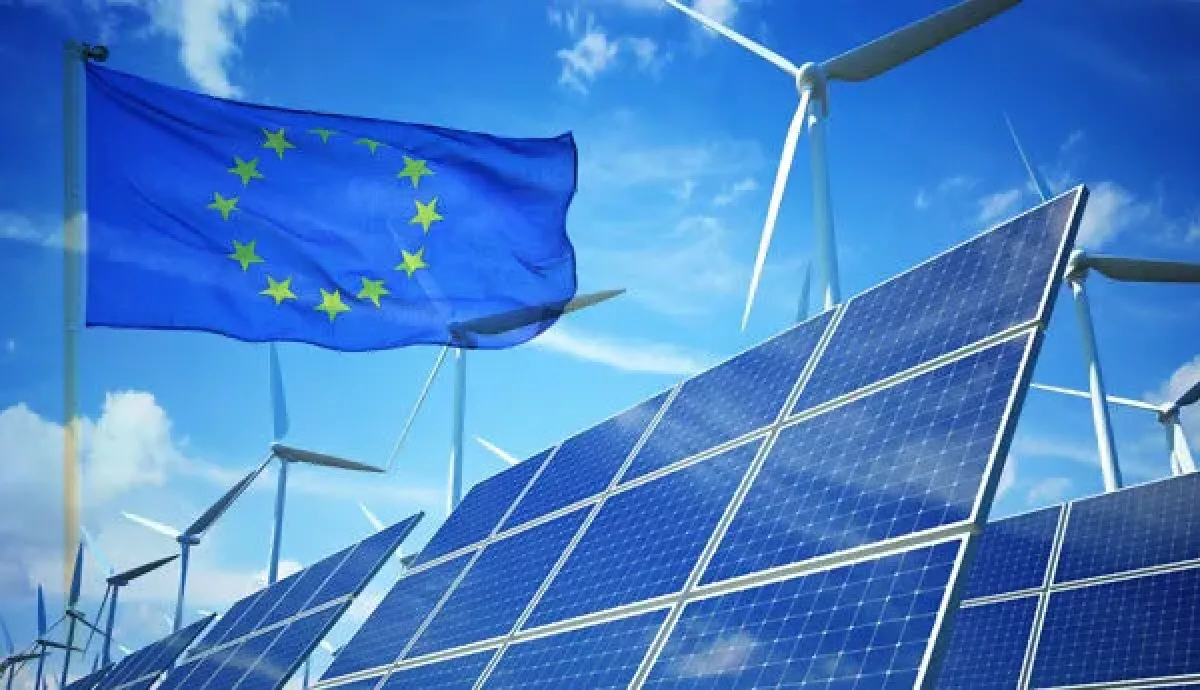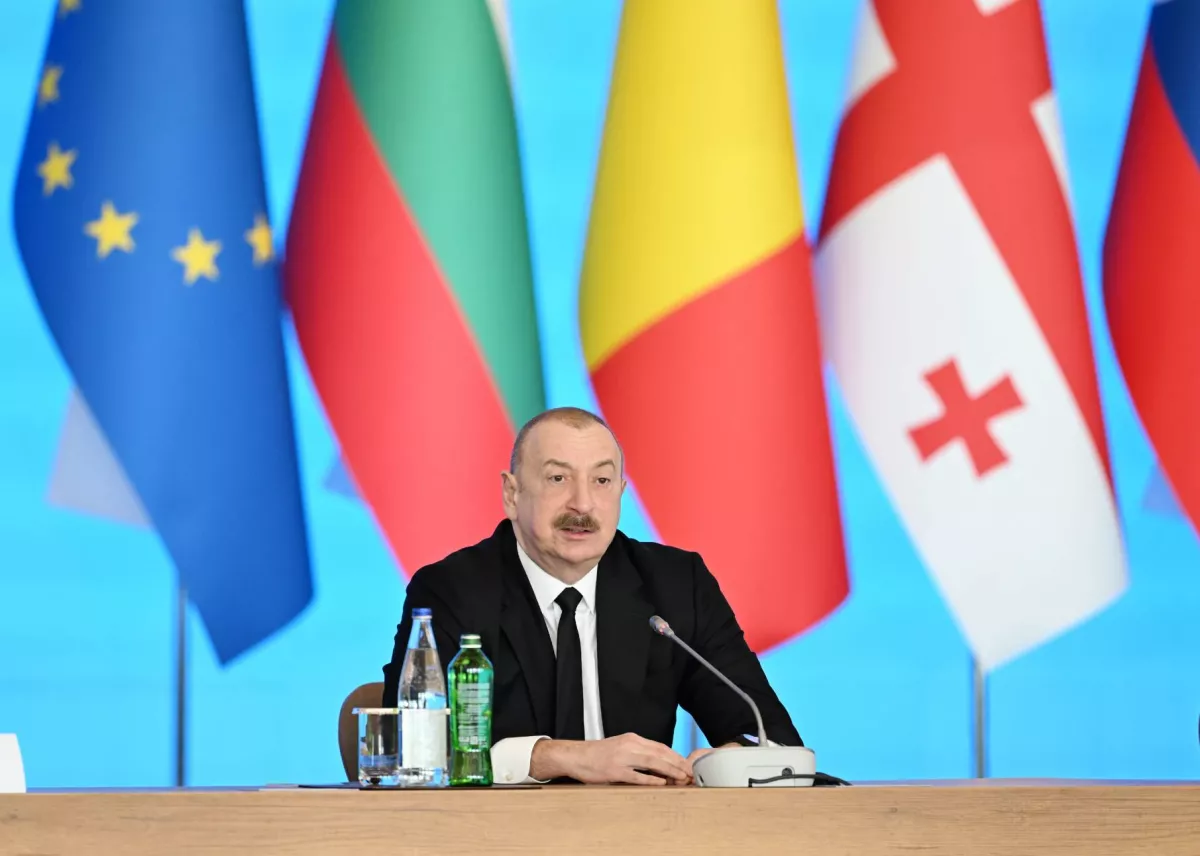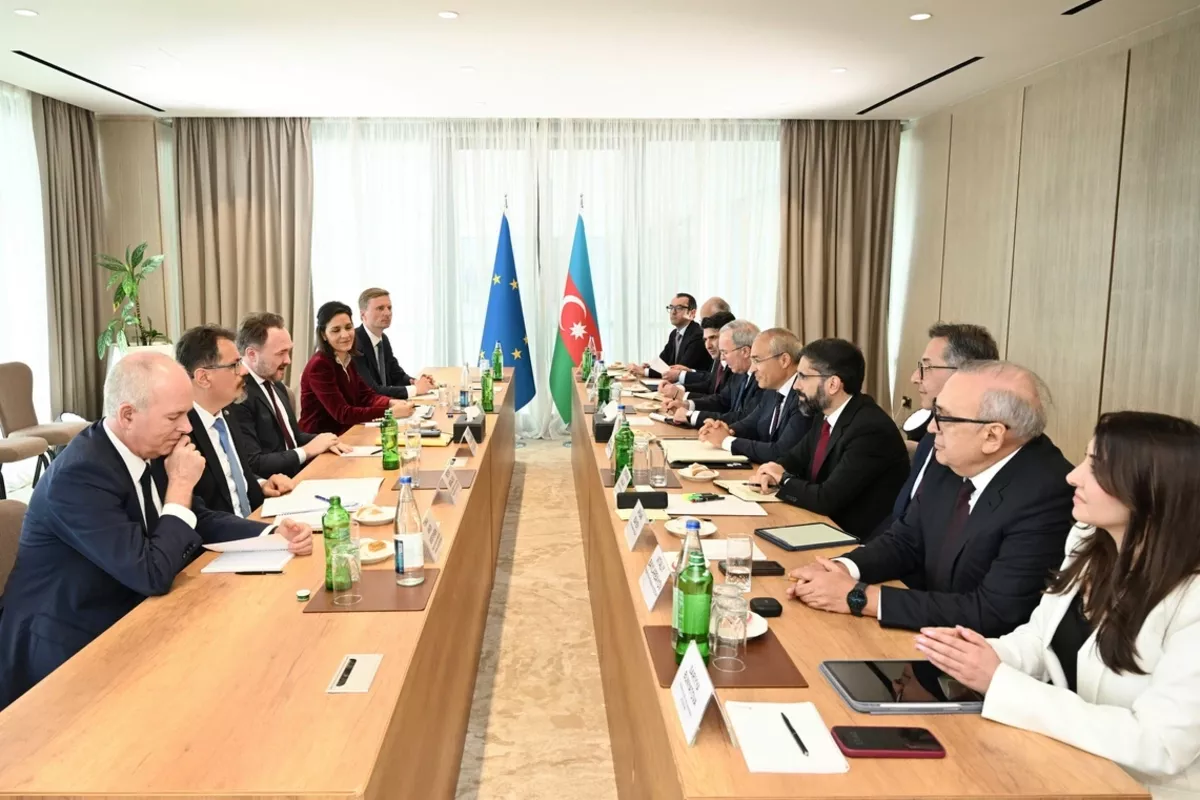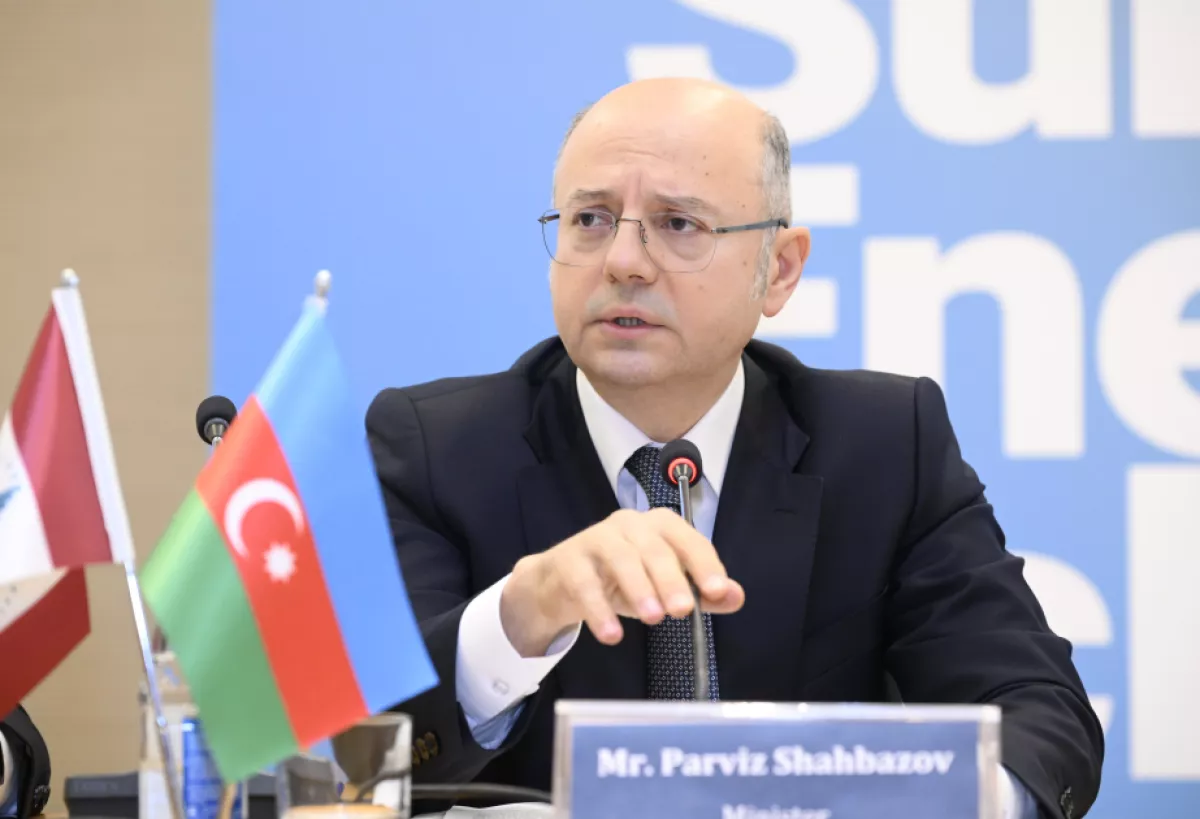Azerbaijan as bridge between East and European energy security Green corridor
On April 4, Baku hosted the 11th Ministerial Meeting of the Southern Gas Corridor Advisory Council and the 3rd Ministerial Meeting of the Green Energy Advisory Council. These events took place at a particularly challenging time for the global economy. Europe today not only faces the task of implementing its already planned transition to renewable or green energy sources. The EU is also striving to reduce its dependence on Russian energy resources while maintaining the competitiveness of its economy—a goal that is becoming increasingly difficult, especially amid the onset of a trade and tariff war with the United States.
The recent imposition of tariffs by the US on goods from EU countries has once again forced European manufacturers to look for ways to lower production costs, including by reducing the "energy component" of these costs. As a result, ensuring a supply of affordable electricity to the EU is becoming a crucial factor in maintaining the competitiveness of European products.
By the end of 2024, renewable sources accounted for 47% of the electricity generated in the European Union—a share that is expected to grow even further in the near future. However, generating electricity from wind and solar power is highly dependent on weather conditions, which presents its own challenges.
For example, in November and December 2024, Germany—Europe’s economic powerhouse and a country that has firmly committed to renewable energy—experienced what is known as a “dark doldrums” period, marked by overcast skies and a lack of wind. As a result, the efficiency of solar panels and wind turbines dropped sharply. Consequently, the price of electricity on the market soared to €100 per megawatt-hour—a record high over the past 18 years.
Such problems can potentially be addressed through electricity imports from outside the EU. However, geopolitics has introduced its own complications—EU countries have ceased even recently mutually beneficial energy cooperation with Russia.
For instance, on February 8, the Baltic states—Estonia, Lithuania, and Latvia—withdrew from the BRELL power grid, an international energy system named after its member countries (Belarus, Russia, Estonia, Lithuania, and Latvia). While the Baltic states represent a small share of the EU’s economy, their energy decoupling from Russia has already led to rising electricity prices in their domestic markets. This could result in further stagnation in the real sectors of the Baltic economies.
Moreover, the previous parallel operation of the Baltic and Russian power systems had allowed for effective use of electricity flow during peak hours in this part of the European Union.

This explains the growing interest of a united Europe not only in natural gas supplies from the Caspian region but also in electricity imports from the South Caucasus and Central Asia. It is no coincidence that the EU Commissioner for Energy and Housing, Dan Jørgensen, took part in the ministerial meetings held in Baku on April 4. In total, the meetings were attended by representatives of 24 countries, seven international financial institutions, and 42 energy companies from around the world.
In his address, President of Azerbaijan Ilham Aliyev highlighted both the role of the Southern Gas Corridor and the prospects for green energy development. According to him, Azerbaijan currently supplies natural gas to 12 countries—10 of which are European, including 8 EU member states. Since the signing of the Memorandum of Strategic Partnership in the field of energy between Azerbaijan and the European Commission, Azerbaijani gas exports to Europe have increased by nearly 60%.
“That declaration was signed by the President of the European Commission and myself in mid-2022. In 2021, our gas supply to Europe was about 8 BCM. Last year, it was almost 13. So, it is more than half of our total export, which is 25 BCM, and which will grow,” Ilham Aliyev noted.
Speaking about the importance of the Southern Gas Corridor, President Aliyev also emphasised the need for financing new projects that could further increase natural gas supplies to the European Union.
"The Southern Gas Corridor is a tremendous success story for all of us. The 3,500-kilometer integrated pipeline system today is the main artery for energy security for many countries. And now it is working at full capacity. Whether it’s the South Caucasus Pipeline, TANAP, or TAP — three integral parts of the Southern Gas Corridor — all are fully packed. So we need to expand. And for that, we will need, of course, financing. And we come to a very important point, which we have raised on several occasions — that international financial institutions, those who decided to stop financing fossil fuel projects, will probably reconsider their policy, especially taking into account the huge geopolitical changes that we all witness.The Southern Gas Corridor is a tremendous success story for all of us. The 3,500-kilometer integrated pipeline system today is the main artery for energy security for many countries. And now it is working at full capacity. Whether it’s the South Caucasus Pipeline, TANAP, or TAP — three integral parts of the Southern Gas Corridor — all are fully packed. So we need to expand. And for that, we will need, of course, financing. And we come to a very important point, which we have raised on several occasions — that international financial institutions, those who decided to stop financing fossil fuel projects, will probably reconsider their policy, especially taking into account the huge geopolitical changes that we all witness," stated Ilham Aliyev.

It is worth recalling that a key project like the Trans-Caspian Gas Pipeline could provide the EU with additional volumes of natural gas, but its financing remains frozen. Yet, this project would allow substantial volumes of Turkmen gas to reach Europe via transit through Azerbaijan, Georgia, and Türkiye—something the EU leadership is clearly interested in from a geopolitical standpoint.

At the press conference following the 11th Ministerial Meeting of the Southern Gas Corridor Advisory Council and the 3rd Ministerial Meeting of the Green Energy Advisory Council, Dan Jørgensen openly reaffirmed the EU’s course toward reducing its energy dependence on Russia.
"Currently, in Europe, we want to completely eliminate our dependence on Russian gas. After Russia's unjust attack on Ukraine, we are trying to stop importing Russian gas. Previously, we used to get 45% of our gas from Russia, but we have reduced this figure to 13%. We intend to bring this figure to zero," Jørgensen stated.
This clearly shows that the EU now fully recognises the importance of increasing gas supplies from the Caspian region—an awareness that significantly boosts the prospects for implementing a project like the Trans-Caspian Gas Pipeline.
In his speech, President Aliyev also emphasised the importance of the green agenda, which will help reduce domestic natural gas consumption.
“Today, already signed contracts with our investors on Solar and Wind Power stations will allow us to have, by 2030, 6 GW of solar and wind energy. As I said, that will save a lot of natural gas, which we currently use to produce electricity domestically, and all of that will be available for export,” Aliyev said.
He noted that Azerbaijan is also boosting its hydropower capacity in the East Zangezur and Karabakh regions—territories liberated from Armenian occupation—through domestic investment. “We have already installed 270 megawatts of hydropower stations. More than 30 small hydropower stations have already been inaugurated, and in the next maximum five years, this number will grow up to 500 megawatts, with an additional 30 small hydropower stations. So, that will eventually, by 2030, create an energy potential of 6.5 gigawatts,” he stated.
According to President Aliyev, Azerbaijan’s current installed capacity is slightly over 8 gigawatts, meaning that within the next five years, the country will nearly double its renewable energy production capacity.
Azerbaijan, Georgia, Türkiye, and Bulgaria signed a Memorandum of Understanding on green energy in Baku. Azerbaijan’s Minister of Energy, Parviz Shahbazov, stressed that the document paves the way for the creation of a new green energy corridor for the export of renewable electricity.
“Azerbaijan is currently implementing several green energy initiatives, including the project to establish a green energy corridor stretching from the Caspian Sea to the Black Sea and on to Europe (Hungary). I would like to point out that any assumptions suggesting these green energy corridor projects might compete with one another are incorrect. Azerbaijan has sufficient resources to implement all of these projects,” Shahbazov noted.

However, the countries of the South Caucasus are not only capable of supplying green energy to the European market themselves, but also of acting as a transit route for renewable electricity from Central Asia.
It is worth recalling that an agreement to implement the “Central Asia – Azerbaijan” green energy corridor project via the Caspian Sea was signed during COP29 in November 2024. On April 4, 2025, in Baku, Uzbekistan, Kazakhstan, and Azerbaijan reached an agreement with the Asian Development Bank (ADB) and the Asian Infrastructure Investment Bank (AIIB) to launch the first phase of the green energy corridor to Europe. A Memorandum of Understanding was signed between the energy ministries of the three countries and representatives of the ADB and AIIB, outlining cooperation in the preparation of a feasibility study for the project, which aims to integrate the energy systems of the three states and create a route for delivering green electricity to Europe.
According to Uzbekistan’s Deputy Minister of Energy, Umid Mamadaminov, the total capacity of renewable energy sources in Central Asia will exceed 30 GW by 2030. “This means we will soon have a surplus of green electricity,” he noted, emphasising that the energy corridor project is intended to provide the necessary infrastructure for exporting this surplus renewable power to Europe, “turning a challenge into an opportunity.”
The importance of forming a “green energy corridor” between Central Asia, the South Caucasus, and Europe was also emphasised by Azerbaijan’s Minister of Energy.
“These initiatives mean more than just access to green energy. They strengthen regional cooperation. Romania, Hungary, and Bulgaria are key players, while Georgia, Türkiye, Uzbekistan, Kazakhstan, and Azerbaijan are opening new horizons for the export of green energy, creating significant opportunities for the development of wind energy infrastructure in the Caspian, equipment supply, energy trading, and project financing,” Shahbazov stated.
Notably, Central Asian countries do not experience the “dark doldrums” problem, which was recently observed in Germany. In some areas, especially in Uzbekistan and Turkmenistan, there is an abundance of sunlight for most of the year, while in others, winds are consistently strong. A significant portion of Kazakhstan’s territory is known for its powerful and steady winds, and the country’s authorities intend to harness this potential.
According to Kazakhstan’s Electricity Development Program, 500 MW of wind power capacity is planned to be introduced by 2030, including the “Dzungar Gates” wind farm, with an initial 50 MW. Construction of the first stage of the project has already begun. The “Dzungar Gates” wind corridor stretches over 50 kilometers. Experts estimate that the average annual wind speed at 50 meters height is 9.7 m/s, with strong winds reaching up to 32 m/s. The wind flow density is 1050 W/m², and the number of hours the wind farm operates at full capacity reaches 4,400 hours per year. Such wind energy potential is something many EU countries can only dream of. Moreover, no EU country can match Uzbekistan's solar energy potential.
Moreover, it is important to note that there is a significant time zone difference between Central Asia and Western Europe, which will allow for the transfer of electricity through the green energy corridor via the South Caucasus from Central Asia to Europe during peak demand times in the West, when consumption is minimal in the East. Additionally, Georgia, with its well-developed energy sector, can enhance the efficiency of this energy corridor, as hydroelectric power stations (HPS) in renewable energy systems have the highest flexibility.
Vladimir Tskhvediani, Georgia, exclusively for Caliber.Az








